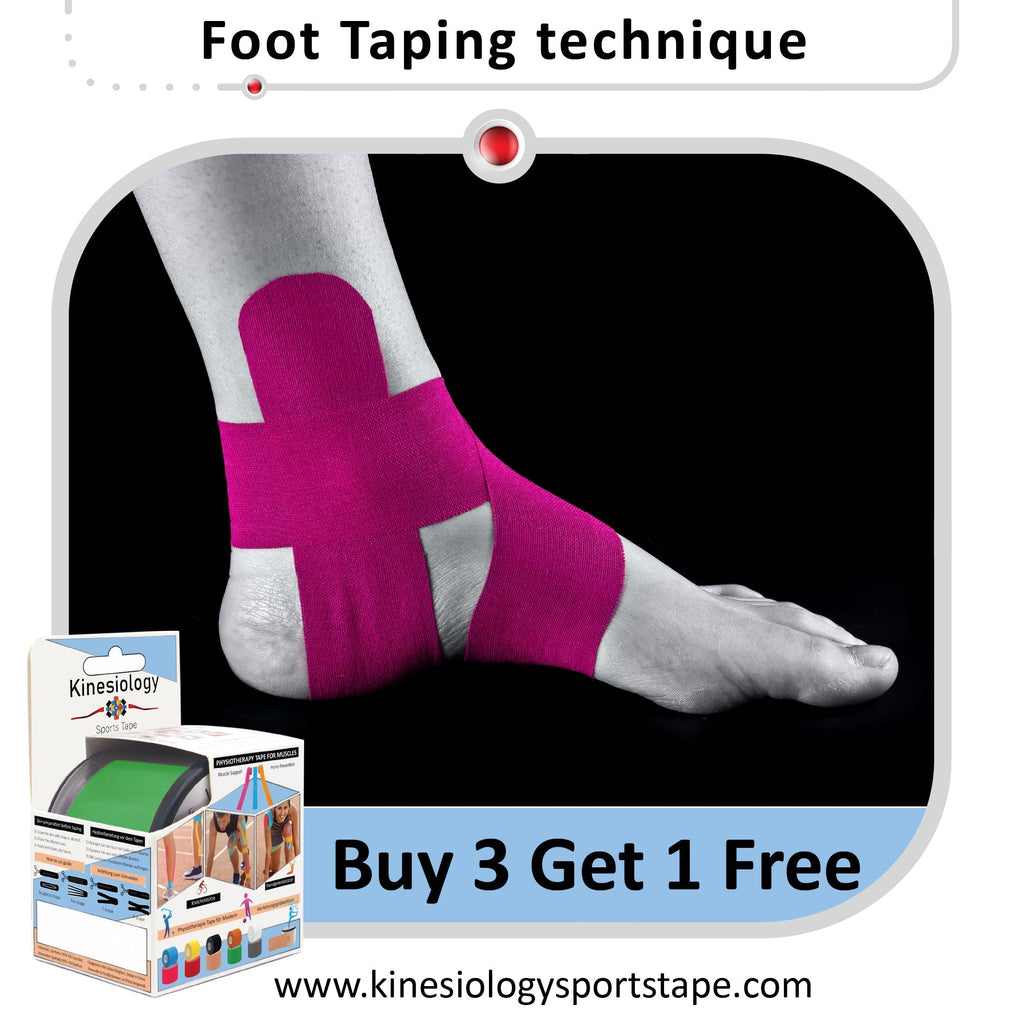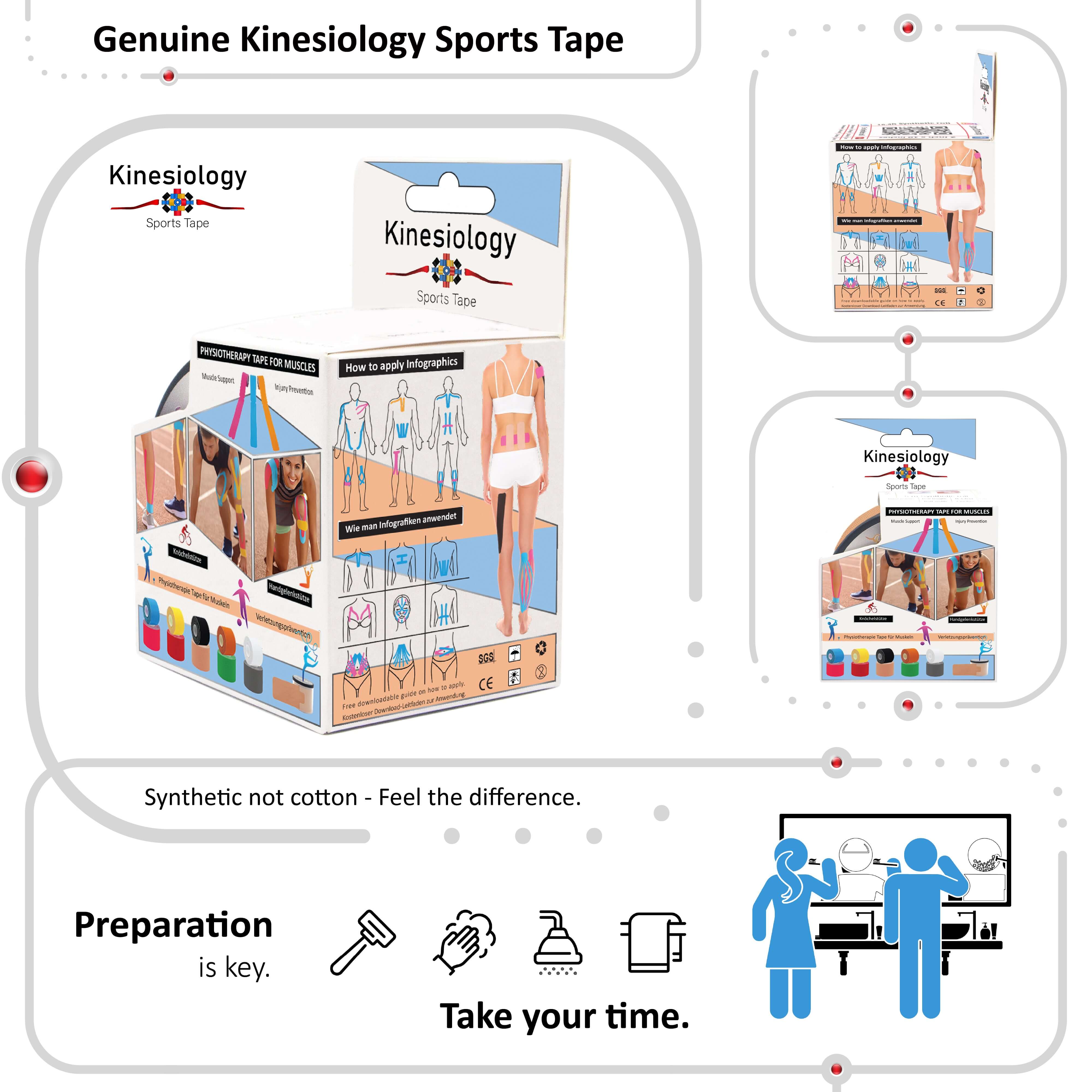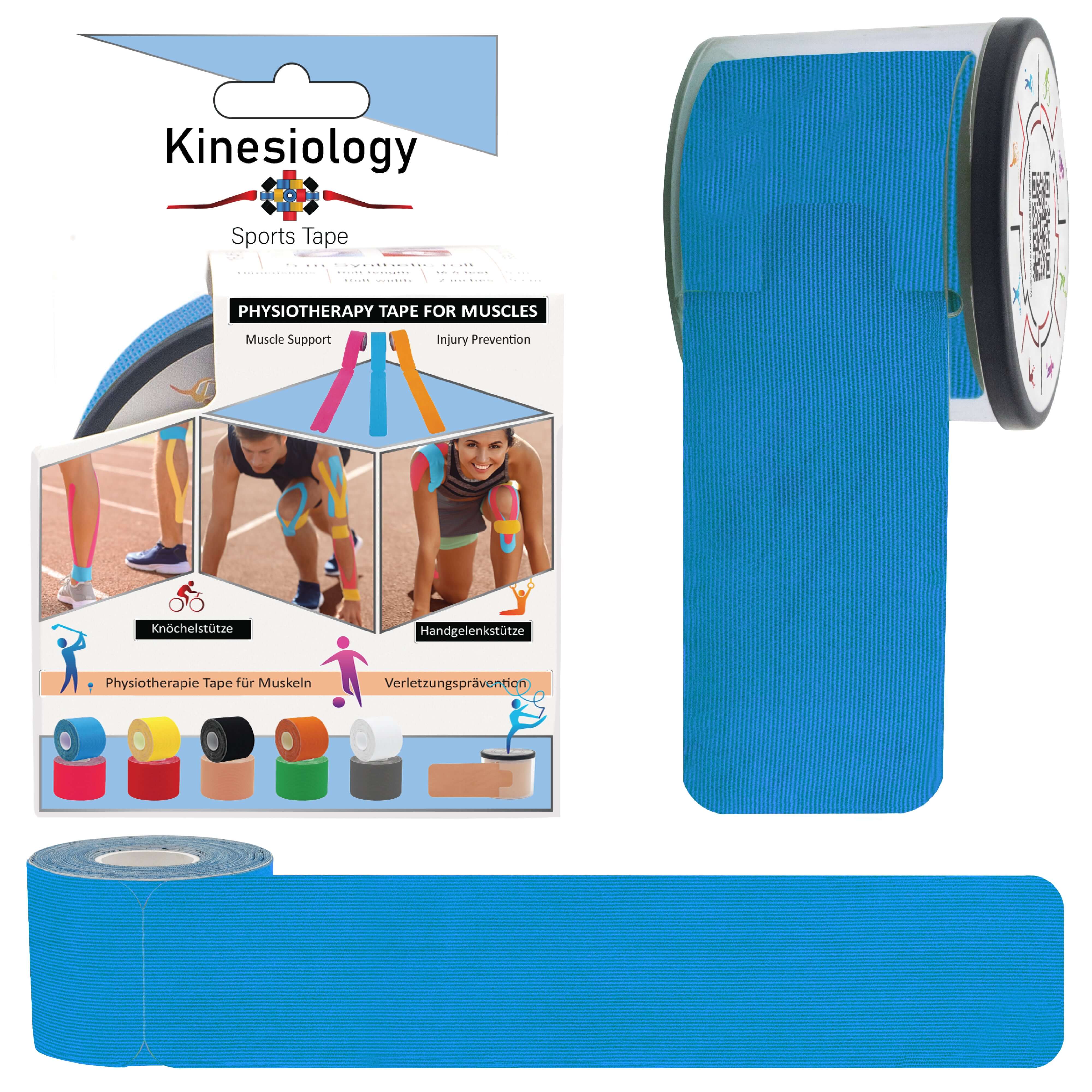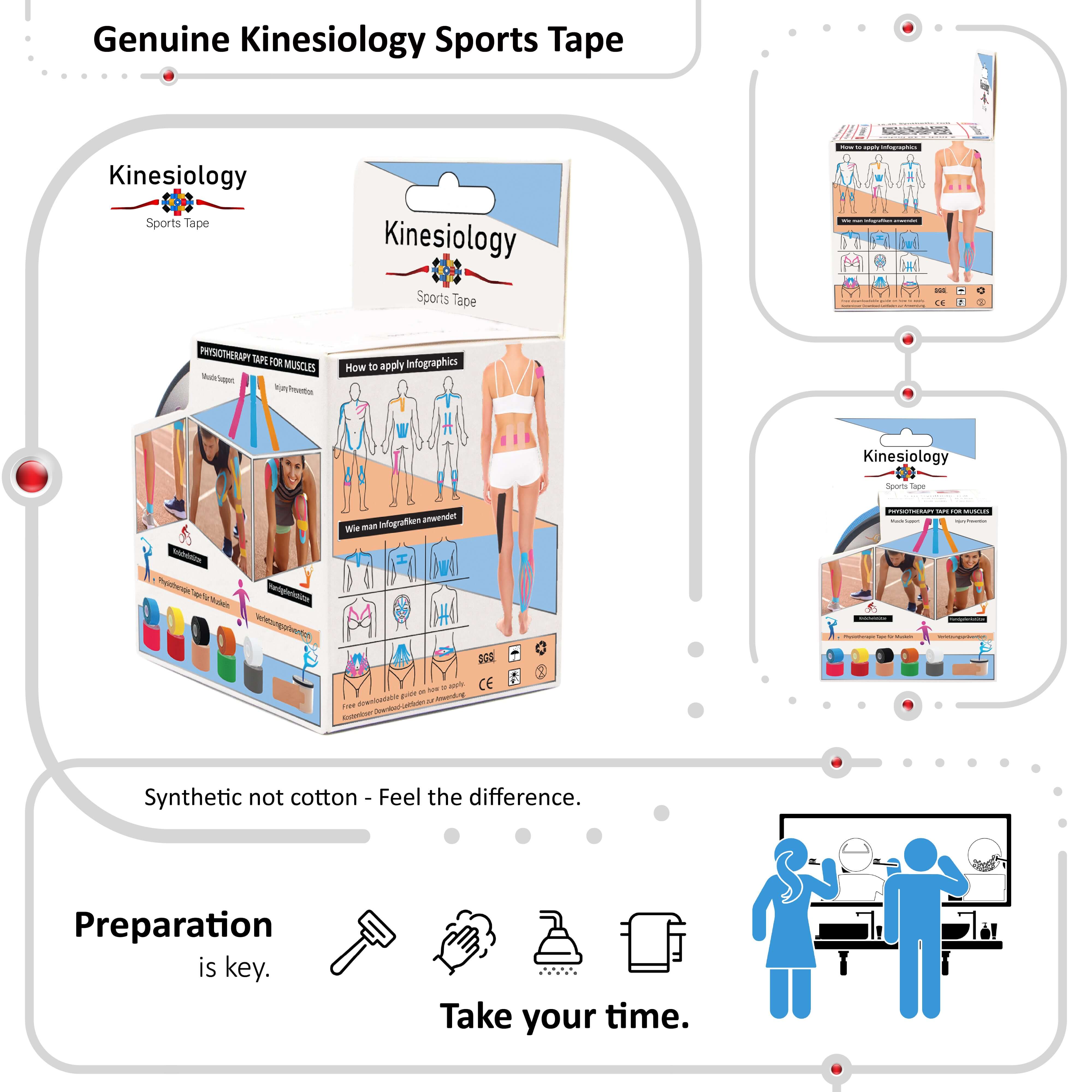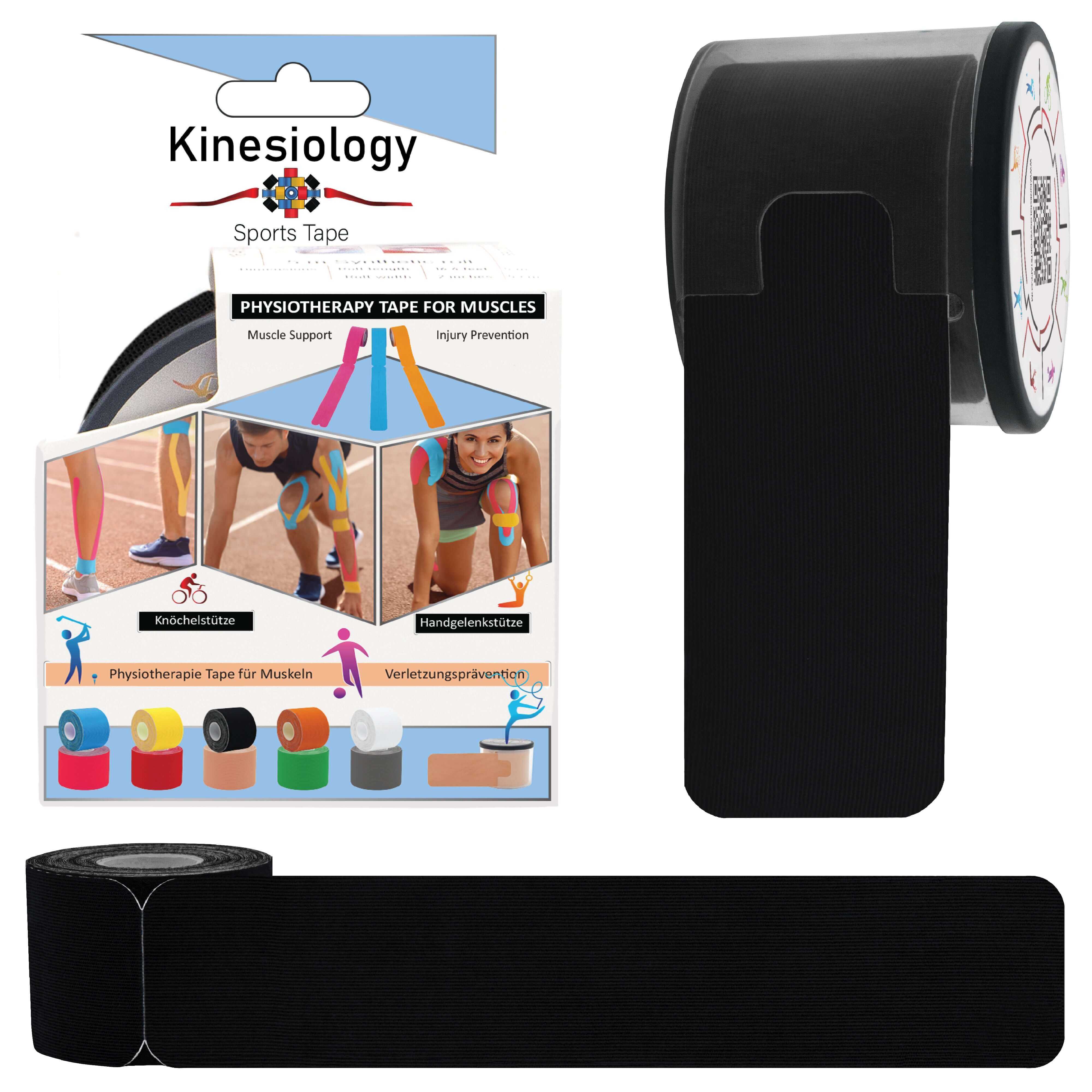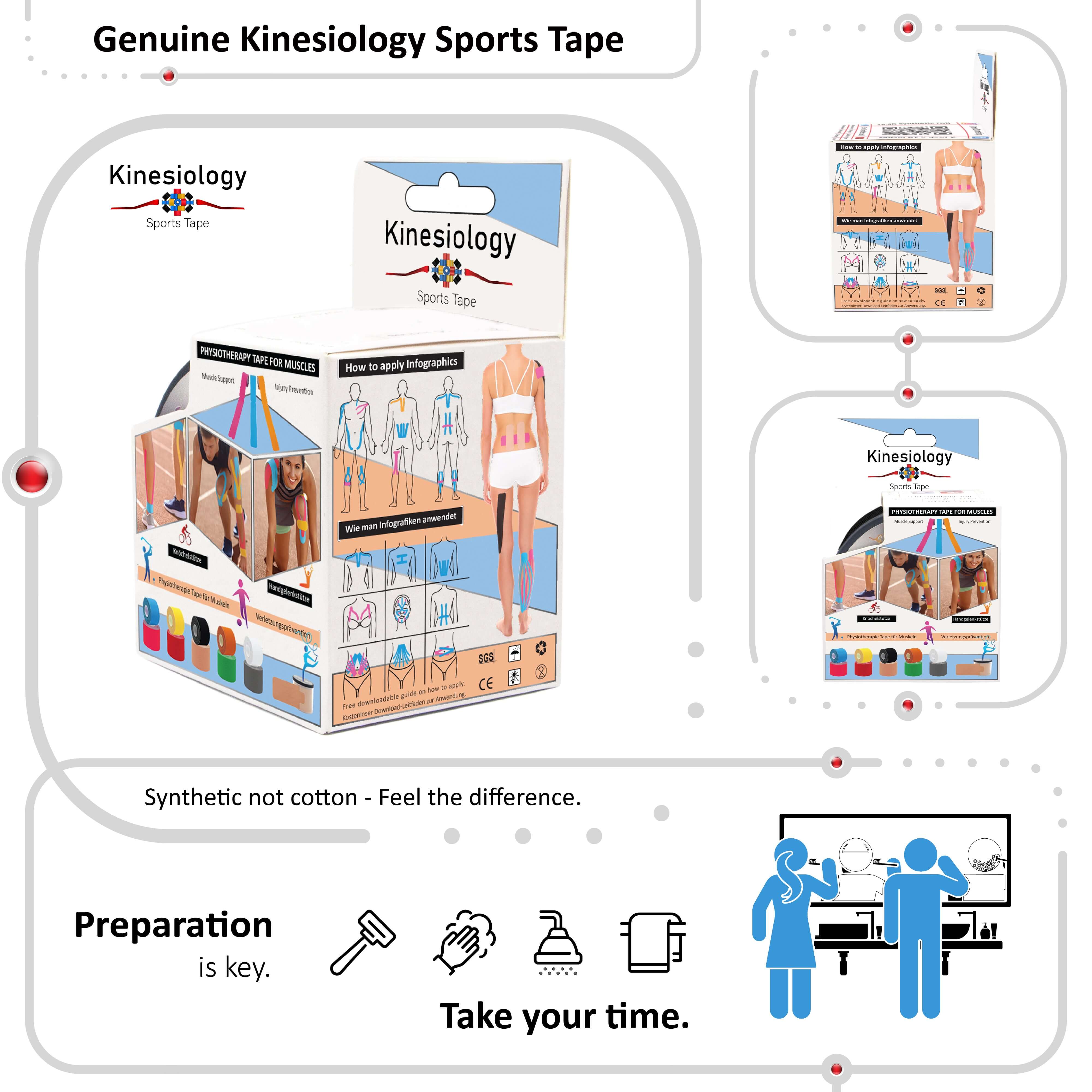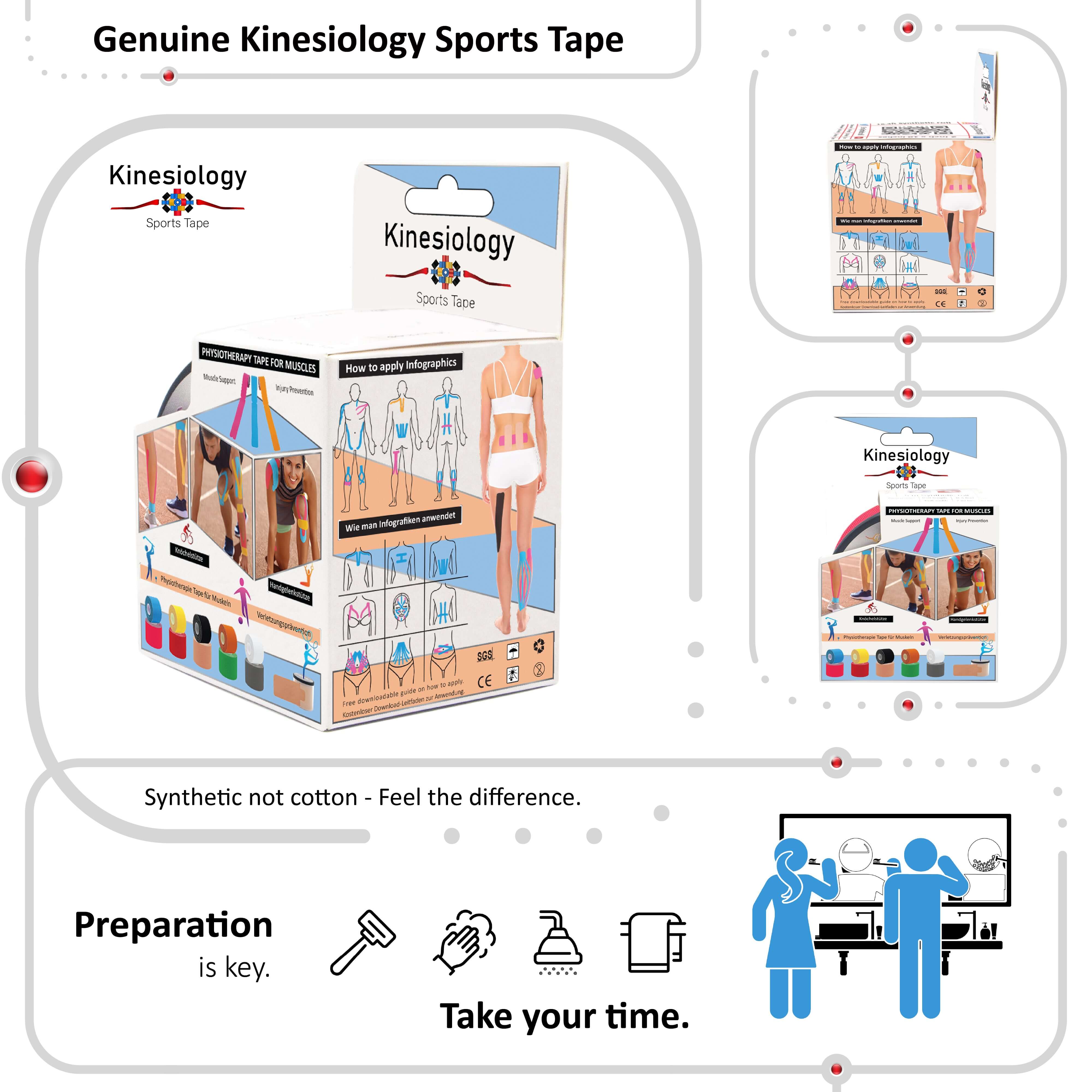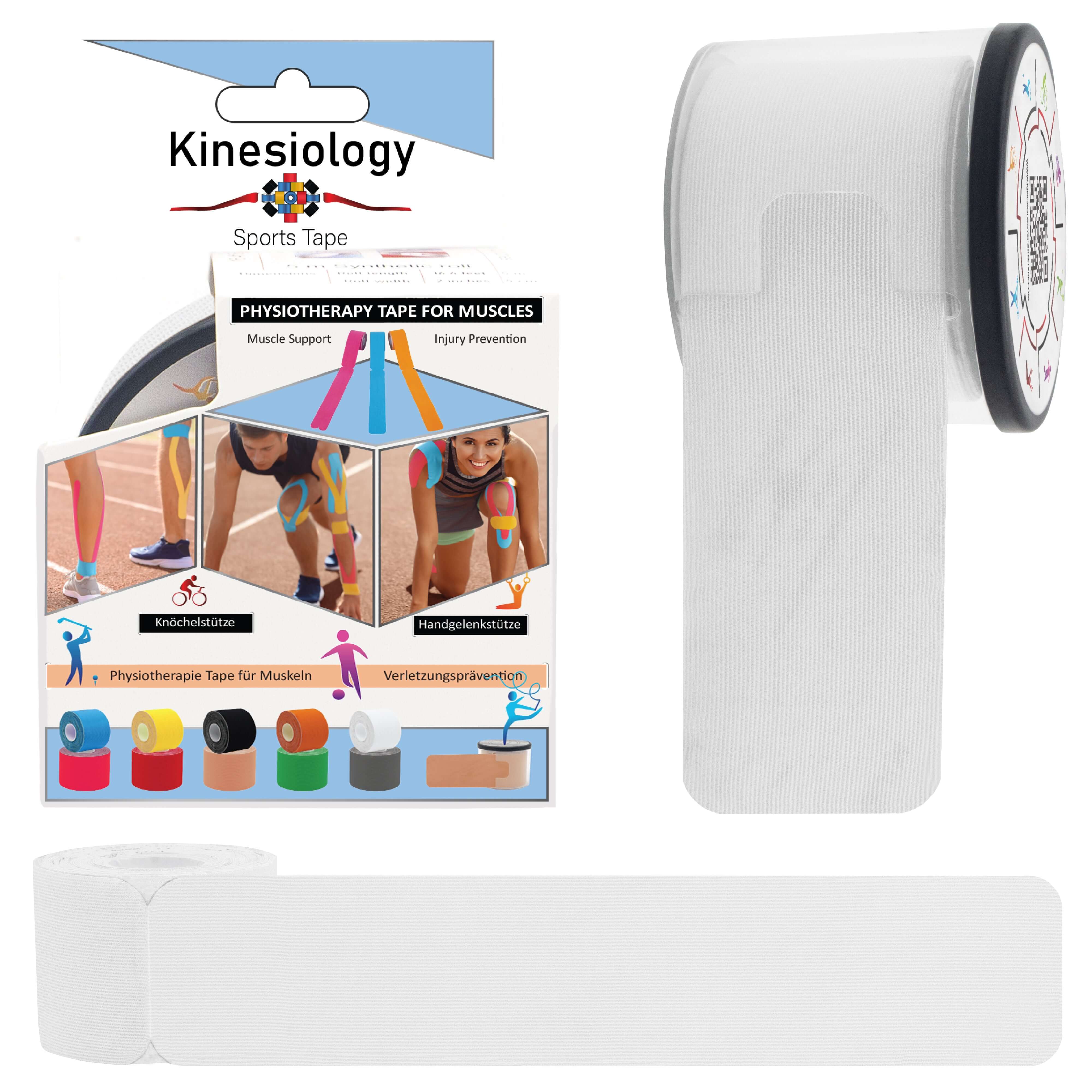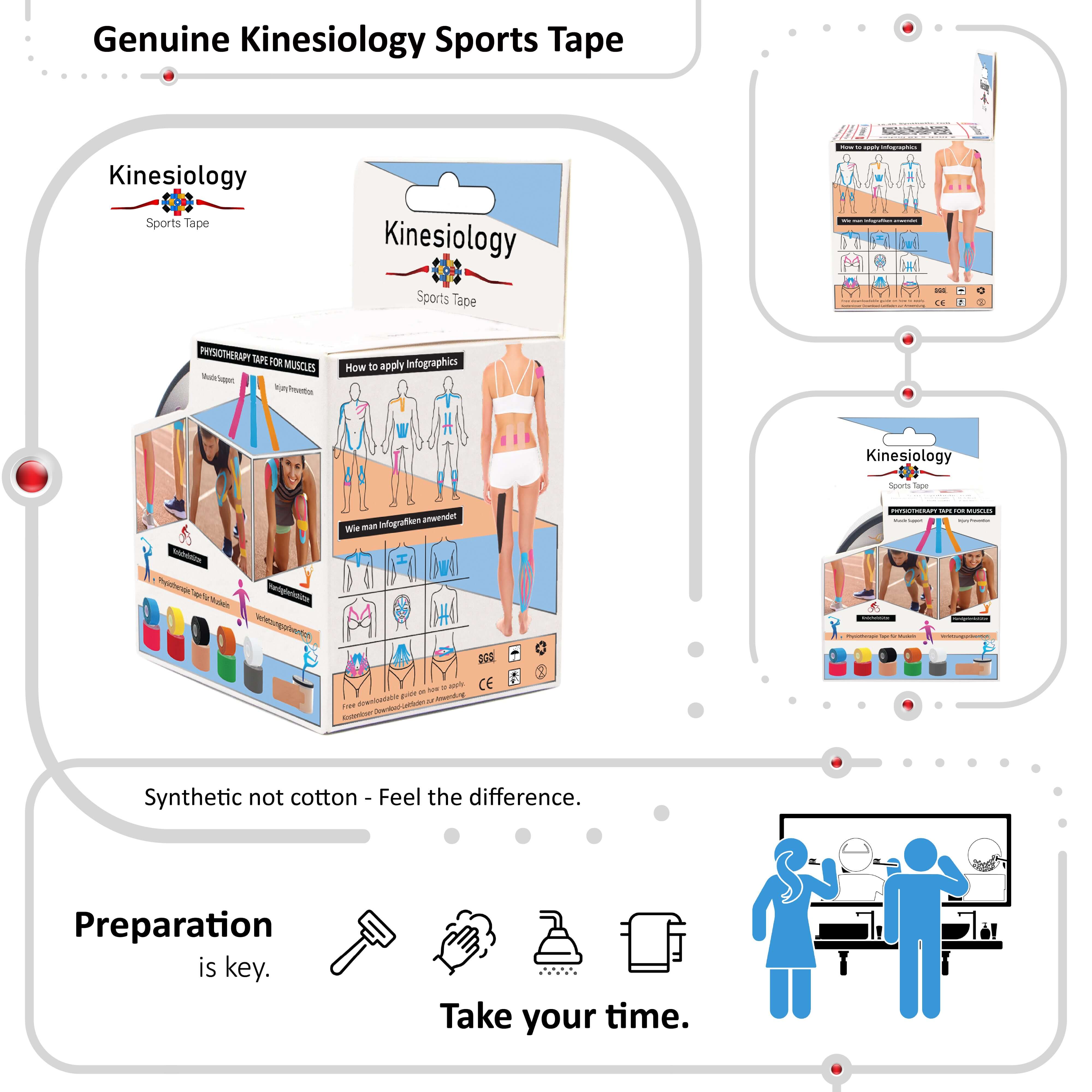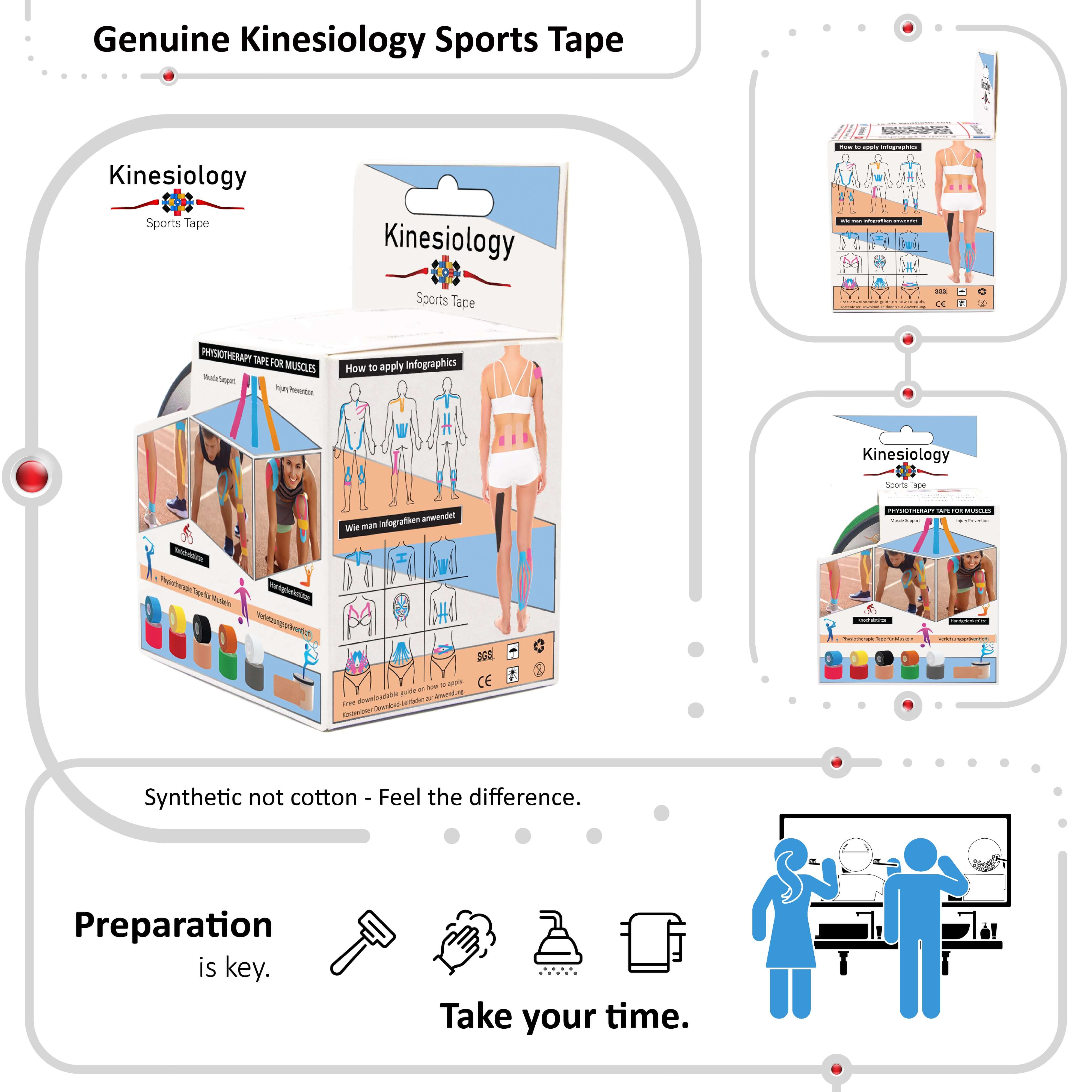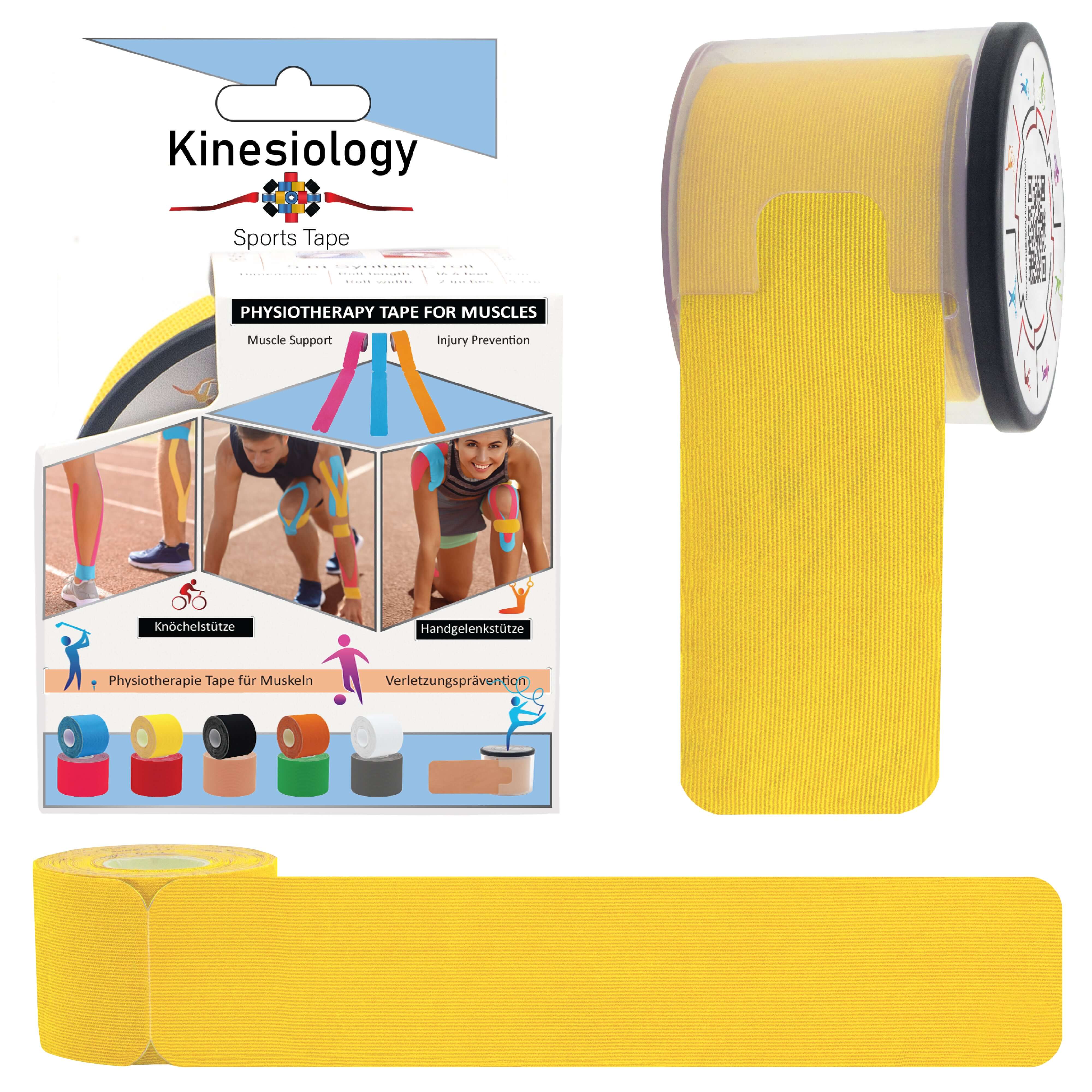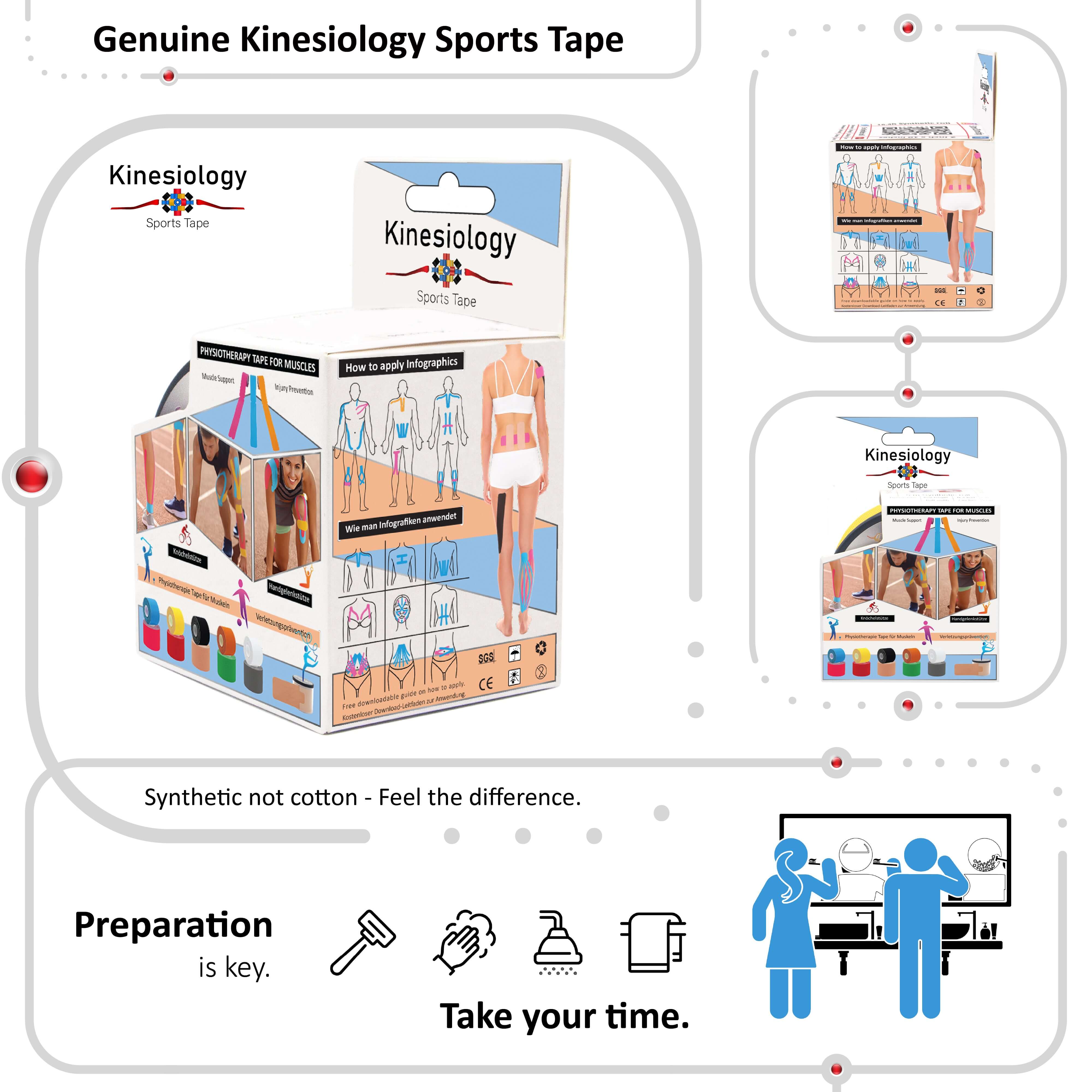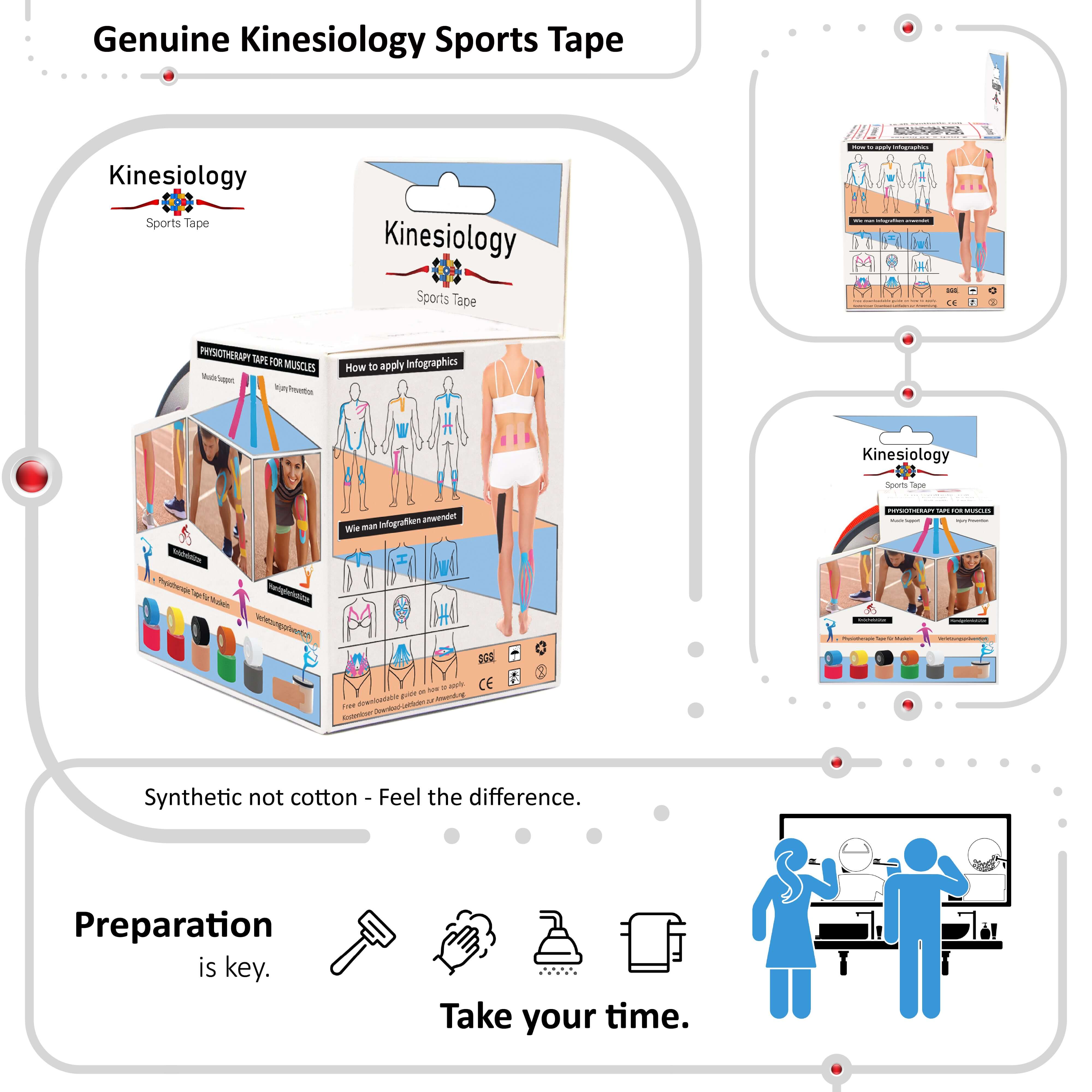
Kinesiology Tape for Lymphatic Drainage and Swelling Reduction: Complete Therapeutic Guide

Lymphatic drainage and swelling reduction represent some of the most innovative and effective applications of kinesiology tape, offering a non-invasive approach to managing edema, promoting healing, and enhancing recovery from various conditions [1]. The lymphatic system plays a crucial role in maintaining fluid balance, immune function, and tissue health, but when this system becomes compromised or overwhelmed, swelling and fluid accumulation can significantly impact quality of life and healing processes. Kinesiology tape's unique properties make it particularly well-suited for supporting lymphatic function and reducing swelling through gentle, continuous stimulation that works with the body's natural drainage pathways.
Traditional approaches to lymphatic drainage often involve manual lymphatic drainage massage, compression garments, or elevation techniques, but these methods may not be practical for continuous use or may not address all aspects of lymphatic dysfunction [2]. Kinesiology tape offers a revolutionary alternative that can provide 24-hour lymphatic support while allowing normal daily activities and maintaining comfort. The tape's ability to create lifting effects in the skin and underlying tissues promotes lymphatic flow and reduces tissue pressure, making it an invaluable tool for both acute and chronic swelling conditions.
Research has demonstrated the effectiveness of kinesiology tape for lymphatic drainage applications, with studies showing significant reductions in swelling, improved tissue healing, and enhanced recovery rates across various conditions [3]. The tape's gentle mechanism of action makes it suitable for sensitive populations and post-surgical applications where traditional compression methods might be too aggressive or uncomfortable. This evidence-based approach to swelling management has made kinesiology tape an increasingly popular choice among healthcare providers and patients seeking effective, non-invasive treatment options.
The versatility of lymphatic drainage taping makes it applicable to a wide range of conditions, from post-surgical swelling and sports injuries to chronic lymphedema and pregnancy-related edema [4]. Understanding the principles of lymphatic anatomy and function, combined with proper application techniques, allows for targeted interventions that can significantly improve outcomes for individuals dealing with various types of swelling and fluid retention.
This comprehensive guide explores the science behind kinesiology tape's effectiveness for lymphatic drainage, provides detailed application techniques for various swelling conditions, and offers evidence-based strategies for maximizing therapeutic outcomes. Whether you're dealing with post-surgical swelling, sports-related edema, or chronic lymphatic conditions, understanding how to properly apply and utilize kinesiology tape for lymphatic drainage can be a valuable component of your treatment strategy.
Understanding the Lymphatic System and Swelling Mechanisms
The lymphatic system is a complex network of vessels, nodes, and organs that plays essential roles in fluid balance, immune function, and tissue maintenance [5]. Understanding this system's anatomy and function is crucial for effective lymphatic drainage taping and swelling management.
The lymphatic system consists of a vast network of thin-walled vessels that parallel the circulatory system, collecting excess fluid, proteins, and cellular debris from tissues and returning them to the bloodstream [6]. Lymphatic capillaries begin as blind-ended tubes in tissues and gradually merge into larger collecting vessels that eventually drain into the thoracic duct and right lymphatic duct, which empty into the subclavian veins near the heart.
Lymph nodes serve as filtering stations throughout the lymphatic system, removing bacteria, viruses, and other foreign substances from the lymph fluid [7]. These nodes are concentrated in areas such as the neck, armpits, groin, and abdomen, and play crucial roles in immune surveillance and response. When lymph nodes become enlarged or compromised, lymphatic drainage can be impaired, leading to swelling and fluid accumulation.
The lymphatic system relies on several mechanisms to move lymph fluid through the vessels, including intrinsic contractions of lymphatic smooth muscle, external compression from surrounding muscles, respiratory movements, and arterial pulsations [8]. Unlike the circulatory system, the lymphatic system lacks a central pump, making it more susceptible to dysfunction when these natural pumping mechanisms are impaired.
Swelling, or edema, occurs when the balance between fluid filtration and lymphatic drainage is disrupted [9]. This can result from increased capillary filtration, decreased lymphatic drainage capacity, or a combination of both factors. Common causes of swelling include injury, surgery, infection, venous insufficiency, heart failure, kidney disease, and lymphatic system dysfunction.
Acute swelling typically results from injury or inflammation and involves increased capillary permeability and local inflammatory responses [10]. This type of swelling is usually temporary and resolves as the underlying condition heals. However, if lymphatic drainage is impaired or overwhelmed, acute swelling can become chronic and lead to tissue changes that further compromise lymphatic function.
Chronic swelling, or lymphedema, represents a more serious condition where the lymphatic system's capacity is permanently reduced or compromised [11]. This can result from congenital abnormalities, surgical removal of lymph nodes, radiation therapy, infection, or other factors that damage the lymphatic system. Chronic lymphedema requires ongoing management to prevent complications and maintain tissue health.
The Science Behind Kinesiology Tape's Lymphatic Effects
The therapeutic effects of kinesiology tape on lymphatic drainage operate through several mechanisms that work together to enhance lymphatic flow and reduce tissue swelling [12]. Understanding these mechanisms helps explain why kinesiology tape can be so effective for lymphatic applications and guides proper application techniques.
The lifting effect created by kinesiology tape represents the primary mechanism by which the tape enhances lymphatic drainage [13]. When properly applied, the tape's elastic recoil creates microscopic lifts in the skin that increase the space between skin and underlying tissues. This increased space reduces tissue pressure and creates a pressure gradient that promotes lymphatic flow toward functioning drainage pathways.
The wave-like adhesive pattern on kinesiology tape is specifically designed to enhance these lifting effects [14]. The undulating pattern creates multiple contact points that generate lifting forces in different directions, maximizing the tape's ability to decompress tissues and promote fluid movement. This design feature makes kinesiology tape particularly effective for lymphatic applications compared to other types of tape.
Mechanical stimulation of lymphatic vessels occurs through the tape's continuous contact with the skin and underlying tissues [15]. This gentle stimulation can help activate the intrinsic contractility of lymphatic smooth muscle, enhancing the natural pumping action of lymphatic vessels. The stimulation is continuous but gentle, avoiding the potential tissue damage that can occur with more aggressive manual techniques.
Directional guidance is another important mechanism by which kinesiology tape enhances lymphatic drainage [16]. The tape can be applied in patterns that follow natural lymphatic drainage pathways, directing fluid flow toward functioning lymph nodes and drainage routes. This directional guidance is particularly valuable when normal drainage pathways are compromised or when alternative routes need to be established.
The neurological effects of kinesiology tape may also contribute to its lymphatic benefits [17]. The sensory input from the tape can influence autonomic nervous system function, potentially affecting lymphatic vessel tone and contractility. Additionally, the tape's effects on pain and inflammation may indirectly benefit lymphatic function by reducing factors that can impair drainage.
Research studies have consistently demonstrated the effectiveness of kinesiology tape for lymphatic drainage applications. A systematic review published in the Journal of Clinical Medicine found that kinesiology tape significantly reduced swelling and improved lymphatic function compared to control groups [18]. Another study showed that kinesiology tape was more effective than traditional compression methods for reducing post-surgical swelling in certain populations.
Assessment and Evaluation for Lymphatic Drainage Applications
Before applying kinesiology tape for lymphatic drainage, a thorough assessment is essential to identify the underlying causes of swelling and determine the most appropriate treatment approach [19]. This assessment should include evaluation of swelling patterns, lymphatic function, and potential contraindications.
Swelling assessment should begin with a detailed history of the edema, including its onset, duration, and any associated symptoms [20]. Understanding the underlying cause of swelling is crucial for determining whether kinesiology tape is appropriate and how it should be applied. Acute swelling from injury may require different approaches than chronic lymphedema or post-surgical edema.
Physical examination should include measurement of limb circumferences or volumes to objectively quantify the degree of swelling [21]. These measurements provide baseline data for tracking treatment progress and determining the effectiveness of interventions. Standardized measurement techniques ensure consistency and reliability of assessments over time.
Skin assessment is particularly important for lymphatic drainage applications, as compromised skin integrity can affect both tape adhesion and treatment safety [22]. The skin should be examined for signs of infection, breakdown, or other conditions that might contraindicate tape application. Skin temperature, texture, and color changes can provide valuable information about the underlying condition.
Lymphatic function assessment may include specialized tests such as lymphoscintigraphy or bioimpedance analysis in complex cases [23]. However, clinical assessment techniques such as pitting edema evaluation, skin fold thickness measurement, and observation of fluid movement patterns can provide valuable information about lymphatic function in most cases.
Range of motion and functional assessment help determine how swelling is impacting daily activities and movement patterns [24]. Significant swelling can restrict joint mobility and interfere with normal function, making these assessments important for treatment planning and goal setting. Functional limitations should be documented to track improvements over time.
Medical history review is essential to identify any conditions or medications that might affect lymphatic function or contraindicate kinesiology tape use [25]. Conditions such as heart failure, kidney disease, or active cancer may require special considerations or medical clearance before beginning lymphatic drainage taping.
Fundamental Lymphatic Drainage Taping Techniques
Mastering the basic principles and techniques of lymphatic drainage taping is essential for achieving optimal therapeutic outcomes [26]. These applications differ significantly from other kinesiology tape uses and require specific approaches tailored to lymphatic anatomy and function.
Preparation for lymphatic drainage taping requires careful attention to positioning and skin preparation [27]. The individual should be positioned to optimize lymphatic drainage, typically with the affected area elevated when possible. Skin preparation should focus on gentle cleansing without disrupting the skin's natural barrier function, as compromised skin can impair lymphatic function.
The fan cut technique represents one of the most important applications for lymphatic drainage [28]. This technique involves cutting the tape into multiple strips that fan out from a single anchor point, creating multiple pathways for lymphatic drainage. The fan cuts should be applied with minimal tension, typically 0-15% stretch, to avoid compressing lymphatic vessels.
Directional application is crucial for lymphatic drainage taping, with tape strips following the natural flow of lymphatic drainage toward functioning lymph nodes [29]. Understanding lymphatic anatomy and drainage patterns is essential for proper tape placement. The tape should guide fluid flow toward areas where lymphatic function is intact and drainage can occur effectively.
The basket weave technique can be used for comprehensive lymphatic drainage over larger areas [30]. This application involves creating a network of intersecting tape strips that provide multidirectional drainage pathways. The basket weave pattern should be applied with gentle tension and careful attention to maintaining skin comfort and circulation.
Anchor placement for lymphatic drainage applications should be positioned over areas with good lymphatic function, typically near functioning lymph nodes [31]. The anchors provide stable attachment points for the drainage strips while ensuring that the tape doesn't interfere with normal lymphatic flow. Proper anchor placement is crucial for maintaining tape effectiveness over time.
Tension considerations for lymphatic drainage applications are critical, as excessive tension can compress lymphatic vessels and impair drainage [32]. Most lymphatic drainage applications use minimal tension, typically 0-25% stretch, with the primary goal being tissue lifting rather than mechanical support. The tape should feel comfortable and should not create any sensation of tightness or restriction.
Condition-Specific Lymphatic Drainage Protocols
Different types of swelling and lymphatic conditions require specific taping approaches tailored to their unique characteristics and underlying pathophysiology [33]. Understanding these condition-specific protocols ensures optimal therapeutic outcomes for various lymphatic drainage applications.
Post-surgical swelling is one of the most common indications for lymphatic drainage taping [34]. Surgery can disrupt normal lymphatic drainage pathways and create localized swelling that can impair healing and function. Kinesiology tape applications for post-surgical swelling should focus on establishing alternative drainage routes and reducing tissue pressure around the surgical site.
For post-surgical applications, gentle fan cuts can be applied around the surgical area, directing lymphatic flow away from the incision toward functioning drainage pathways [35]. The tape should be applied with minimal tension to avoid stress on healing tissues while providing effective lymphatic drainage. Care must be taken to avoid interfering with wound healing or medical monitoring.
Sports-related swelling often results from acute injuries such as sprains, strains, or contusions [36]. These injuries can cause localized inflammation and swelling that can impair function and delay recovery. Lymphatic drainage taping for sports injuries should focus on reducing acute swelling while supporting the healing process and maintaining mobility.
For sports injury applications, combination techniques that provide both lymphatic drainage and mechanical support may be most effective [37]. Fan cuts can be used over areas of swelling while supportive strips provide stability to injured structures. The applications should be designed to allow continued activity participation when appropriate while promoting healing.
Chronic lymphedema requires specialized approaches that address the long-term nature of the condition and the need for ongoing management [38]. These applications may need to be more comprehensive and may require regular modification as the condition changes. The goal is to maximize lymphatic function while preventing complications and maintaining quality of life.
For chronic lymphedema, comprehensive drainage patterns that address multiple lymphatic territories may be necessary [39]. The tape applications should be designed to work with any remaining lymphatic function while establishing alternative drainage routes. Regular reassessment and modification of applications are essential for maintaining effectiveness over time.
Pregnancy-related swelling is common, particularly in the lower extremities, and can significantly impact comfort and mobility [40]. Lymphatic drainage taping during pregnancy must consider the safety of both mother and baby while providing effective swelling reduction. Applications should be gentle and avoid any techniques that might interfere with normal pregnancy physiology.
For pregnancy applications, gentle drainage techniques focusing on the lower extremities are typically most appropriate [41]. The tape should be applied to promote drainage from the feet and ankles toward the heart while avoiding any pressure on the abdomen or areas that might interfere with medical monitoring. All applications should be approved by the healthcare provider.
Advanced Techniques and Combination Approaches
Advanced lymphatic drainage techniques can provide enhanced therapeutic benefits for complex conditions or when basic applications are insufficient [42]. These techniques often involve combinations of different taping methods or integration with other therapeutic interventions.
Multi-territorial drainage approaches recognize that lymphatic dysfunction often affects multiple regions and may require comprehensive treatment strategies [43]. These applications involve creating drainage pathways that span multiple lymphatic territories, establishing alternative routes when primary pathways are compromised. The tape patterns should be designed to work with the body's natural lymphatic anatomy while accommodating any dysfunction.
Sequential drainage techniques involve applying tape in stages to gradually establish effective drainage patterns [44]. This approach may be necessary for severe swelling or when the lymphatic system is significantly compromised. The initial applications focus on establishing basic drainage, with additional tape added as swelling reduces and function improves.
Combination therapy approaches integrate kinesiology tape with other lymphatic drainage techniques such as manual lymphatic drainage, compression therapy, or exercise [45]. The tape can help maintain the benefits of manual therapy between treatment sessions while providing ongoing support for lymphatic function. This comprehensive approach often produces superior results compared to any single intervention.
Deep and superficial drainage techniques recognize that the lymphatic system has both superficial and deep components that may require different approaches [46]. Superficial drainage focuses on the lymphatic vessels just beneath the skin, while deep drainage addresses the larger collecting vessels and nodes. Combination techniques can address both systems simultaneously for maximum effectiveness.
Compensatory drainage techniques are used when primary lymphatic pathways are permanently damaged or removed [47]. These applications focus on enhancing function in remaining lymphatic territories and establishing alternative drainage routes. The tape patterns should be designed to maximize the capacity of functioning lymphatic areas while preventing overload.
Monitoring Progress and Optimizing Outcomes
Effective lymphatic drainage taping requires systematic monitoring of progress and continuous optimization of treatment approaches [48]. Regular assessment ensures that applications remain effective and appropriate as conditions change.
Objective measurement of swelling reduction provides the most reliable indicator of treatment effectiveness [49]. Circumferential measurements, volume assessments, or bioimpedance analysis can provide quantitative data about changes in tissue fluid content. These measurements should be taken at regular intervals using standardized techniques to ensure consistency.
Functional assessment helps determine whether swelling reduction is translating into improved daily function and quality of life [50]. Simple functional tests such as range of motion measurements, walking tolerance, or activities of daily living assessments can provide valuable information about treatment effectiveness. Improvements in function are often as important as objective swelling reduction.
Skin assessment should be conducted regularly to ensure that tape applications are not causing irritation or other complications [51]. The skin under and around tape applications should be monitored for signs of breakdown, infection, or allergic reactions. Any skin changes should be addressed promptly to prevent complications and ensure continued safe use.
Patient comfort and tolerance should be assessed regularly, as lymphatic drainage applications may need adjustment based on individual responses [52]. The tape should feel comfortable and should not cause any sensation of tightness, restriction, or discomfort. Applications that cause discomfort may be counterproductive and should be modified or discontinued.
Treatment modification may be necessary as swelling patterns change or as the underlying condition evolves [53]. Lymphatic drainage applications often need to be adjusted as swelling reduces and normal drainage patterns are restored. Flexibility in approach and willingness to modify techniques are essential for maintaining effectiveness throughout the treatment process.
Integration with Comprehensive Lymphatic Management
While kinesiology tape can be highly effective for lymphatic drainage, it's most beneficial when integrated into a comprehensive lymphatic management approach [54]. This integration ensures optimal outcomes and addresses all aspects of lymphatic health and function.
Manual lymphatic drainage therapy can be effectively combined with kinesiology tape applications [55]. The tape can help maintain the benefits of manual therapy between treatment sessions while providing ongoing support for lymphatic function. This combination approach often produces superior results compared to either intervention alone.
Exercise therapy plays a crucial role in lymphatic health by promoting muscle contractions that assist lymphatic flow [56]. Kinesiology tape can provide support during exercise sessions while enhancing the lymphatic benefits of physical activity. Specific exercises that promote lymphatic drainage should be incorporated into comprehensive treatment programs.
Compression therapy may be used in conjunction with kinesiology tape for certain conditions [57]. The tape can provide gentle, continuous compression while allowing for normal movement and activity. This combination approach can be particularly effective for chronic conditions that require ongoing management.
Lifestyle modifications such as elevation, skin care, and activity modification are important components of comprehensive lymphatic management [58]. Kinesiology tape can support these lifestyle changes by providing ongoing therapeutic benefits while allowing individuals to maintain their daily activities and routines.
Professional guidance from qualified healthcare providers is essential for complex lymphatic conditions [59]. Lymphatic specialists, physical therapists, and other healthcare professionals can provide expert assessment, treatment planning, and monitoring that ensures kinesiology tape is used safely and effectively as part of a comprehensive approach.
Conclusion: Optimizing Lymphatic Health Through Strategic Kinesiology Tape Use
Kinesiology tape represents a valuable and innovative tool for lymphatic drainage and swelling reduction, offering a non-invasive approach that can significantly improve outcomes for individuals dealing with various types of edema and lymphatic dysfunction [60]. The tape's unique ability to enhance lymphatic flow while maintaining comfort and mobility makes it particularly valuable for both acute and chronic swelling conditions.
The key to successful lymphatic drainage taping lies in understanding the complex anatomy and physiology of the lymphatic system, conducting thorough assessments to guide treatment decisions, and implementing evidence-based application techniques [61]. When used correctly and as part of a comprehensive treatment approach, kinesiology tape can provide significant benefits for swelling reduction, tissue healing, and functional improvement.
The versatility of lymphatic drainage taping makes it applicable to a wide range of conditions and populations, from post-surgical patients to athletes to individuals with chronic lymphatic conditions [62]. Its gentle mechanism of action and excellent safety profile make it suitable for sensitive populations and long-term use when necessary.
For individuals considering kinesiology tape for lymphatic drainage, it's important to approach its use with appropriate knowledge, realistic expectations, and professional guidance when needed [63]. While tape can provide significant benefits, it works best when combined with other appropriate interventions and lifestyle modifications. With proper application and integration into comprehensive lymphatic management, kinesiology tape can be a powerful tool for achieving better lymphatic health and improved quality of life.
References
[1] https://www.thysol.us/how-to-tape/lymphatic-taping-lymphedema/ [2] https://kinesiotaping.com/kinesio-taping-of-superficial-lower-extremity-lymphatic-pathways/ [3] https://pmc.ncbi.nlm.nih.gov/articles/PMC9224659/ [4] https://pmc.ncbi.nlm.nih.gov/articles/PMC4520333/ [5] https://www.kttape.com/products/course-3-applied-kinesiology-taping-for-lymphatic-assist [6] https://www.performancehealthacademy.com/how-to-use-kinesiology-tape-to-reduce-swelling.html [7] https://pmc.ncbi.nlm.nih.gov/articles/PMC8169012/ [8] https://www.hss.edu/health-library/move-better/kinesiology-tape [9] https://www.performancehealth.com/articles/kinesiology-tape-101-everything-you-need-to-know [10] https://www.verywellhealth.com/kinesiology-tape-in-physical-therapy-2696435 [11] https://oaidocs.com/2018/09/14/benefits-of-kinesiology-tape/ [12] https://www.healthline.com/health/kinesiology-tape [13] https://therapypartnersgroup.com/7-conditions-that-kinesio-tape-can-benefit-from/ [14] https://tapegeeks.com/blogs/news/benefits-of-kinesiology-tape [15] https://www.premierhealth.com/your-health/articles/women-wisdom-wellness-/how-tape-heals-the-secret-behind-kinesiology-tape [16] https://coastalorthopedics.com/blog/benefits-of-kinesio-tape/ [17] https://pmc.ncbi.nlm.nih.gov/articles/PMC7349891/ [18] https://www.kttape.com/pages/how-to-apply-kt-tape [19] https://www.healthandcare.co.uk/blog/ultimate-guide-how-to-apply-kinesiology-tape.html [20] https://www.physio-pedia.com/Knee_Taping [21] https://www.thysol.us/how-to-tape/knee-pain/ [22] https://sporttape.co.uk/blogs/news/can-kinesiology-tape-relieve-knee-pain [23] https://www.tsaog.com/blog/2024/10/21/how-to-tape-a-knee-for-stability-and-pain/ [24] https://www.healthline.com/health/how-to-tape-a-knee [25] https://www.kttape.com/pages/knee-pain [26] https://www.kttape.com/blogs/how-to-apply/full-knee-support [27] https://www.kttape.com/blogs/how-to-apply/ankle-stability [28] https://www.thysol.us/how-to-tape/ankle-stability/ [29] https://www.nike.com/a/how-to-tape-an-ankle [30] https://www.performancehealthacademy.com/ankle-sprain-kinesiology-taping-technique-tapetuesday.html [31] https://pmc.ncbi.nlm.nih.gov/articles/PMC4851123/ [32] https://www.healthline.com/health/how-to-tape-an-ankle [33] https://www.kttape.com/blogs/how-to-apply/general-shoulder [34] https://www.thysol.us/how-to-tape/shoulder-pain-instability/ [35] https://kinesiotape.com/kinesio-pre-cut-shoulder/ [36] https://www.verywellhealth.com/support-your-shoulder-with-kinesiology-tape-2696040 [37] https://sporttape.co.uk/pages/kinesiology-taping-shoulder [38] https://kinesiologysportstape.com/en-us/pages/shoulder-pain [39] https://www.kttape.com/blogs/how-to-apply/middle-back [40] https://pmc.ncbi.nlm.nih.gov/articles/PMC6657767/ [41] https://kinesiotape.com/kinesio-pre-cut-back/ [42] https://thejupiterchiropractor.com/blog/how-to-kinesio-tape-for-lower-back-pain [43] https://www.performancehealthacademy.com/star-pattern-kinesiology-taping-technique-for-lumbar-pain.html [44] https://www.healthcentral.com/condition/back-pain/can-you-kt-tape-your-back-pain-away [45] https://www.kttape.com/pages/back [46] https://pubmed.ncbi.nlm.nih.gov/27634093/ [47] https://www.ptlinktherapy.com/kinesio-taping-vs-athletic-taping [48] https://www.physixgear.com/blogs/sport-and-wellness/kinesiology-tape-vs-athletic-tape-which-one-is-right-for-me [49] https://www.hinklerpodiatry.com.au/k-tape-vs-sports-tape/ [50] https://goodhealthphysicaltherapy.com/what-is-the-difference-between-kinesiotape-and-athletic-tape/ [51] https://setptusa.com/blog/physical-therapy/kt-tape-kinesio-tape/ [52] https://www.thysol.com.au/sportstape/ [53] https://www.orthopedicsri.com/blog-items/kinesiology-tape-fake-fad-functional/ [54] https://www.ladybirdpt.com/post/taping-a-pregnant-belly [55] https://adatewithbaby.com/how-to-kinesio-tape-pregnant-belly/ [56] https://pmc.ncbi.nlm.nih.gov/articles/PMC5751726/ [57] https://pmc.ncbi.nlm.nih.gov/articles/PMC4837927/ [58] https://kinesiologysportstape.com/en-us/pages/pregnancy-taping [59] https://www.thysol.com.au/kinesiology-tape-applications/ [60] https://pmc.ncbi.nlm.nih.gov/articles/PMC8169012/ [61] https://www.physixgear.com/blogs/sport-and-wellness/kinesiology-tape-vs-athletic-tape-which-one-is-right-for-me [62] https://www.hinklerpodiatry.com.au/k-tape-vs-sports-tape/ [63] https://goodhealthphysicaltherapy.com/what-is-the-

